When it comes to purchasing a used car, the initial sticker price is just the tip of the iceberg. While many buyers focus primarily on the purchase price or the vehicle’s style and brand appeal, the real measure of value lies in the total cost of ownership. One of the most critical factors influencing this is the cost per mile—the average expense of keeping a car running and roadworthy for every mile driven.
This includes fuel, maintenance, repairs, insurance, depreciation, and sometimes even financing costs. Choosing a used car with a low cost per mile can save owners thousands of dollars over the life of the vehicle, while opting for models with high repair and maintenance costs can turn what seems like a bargain into an expensive headache.
Understanding the cost per mile isn’t always straightforward. Some vehicles may have an attractive purchase price but come with hidden long-term expenses, such as frequent repairs, pricey parts, or poor fuel economy.
Others might be more expensive upfront but prove to be reliable, fuel-efficient, and cheap to maintain, making them smarter investments in the long run. For anyone in the market for a used car—whether it’s a first-time buyer, a budget-conscious commuter, or a family seeking dependable transportation—grasping these differences is essential.
This article explores two sides of the used car ownership coin. First, we’ll delve into five used cars with impressively low costs per mile, vehicles known for their reliability, fuel efficiency, and affordable maintenance.
These cars offer peace of mind and predictable expenses, allowing owners to focus on driving rather than constant repairs. Brands like Toyota, Honda, and Hyundai dominate this category, but the list also includes surprising entries that have quietly earned a reputation for frugality without sacrificing quality.
On the flip side, we’ll examine five used cars notorious for their high repair costs. These models often come from luxury or performance-oriented brands that prioritize advanced technology, power, and comfort—but at the cost of complexity and expensive upkeep.
Cars such as BMW, Audi, and Land Rover are beloved for their style and driving dynamics but can become financial burdens when key components fail. The challenges of maintaining these vehicles are compounded by high parts costs, labor-intensive repairs, and the need for specialized service.
By understanding the strengths and weaknesses of each category, used car buyers can make more informed decisions, avoiding costly pitfalls and identifying vehicles that offer the best balance of affordability, reliability, and driving enjoyment.
We’ll explore each vehicle in detail, highlighting why some cars keep repair bills low and mileage costs manageable, while others demand significant ongoing investment.
Moreover, this analysis goes beyond simple stereotypes. Some affordable, low-cost-per-mile vehicles provide unexpected value, while some high-maintenance cars offer exceptional luxury and performance that justify their expenses—if owners are prepared. The goal is not to demonize certain brands or models but to shed light on the often-overlooked financial realities of used car ownership.
Whether you’re planning to keep a car for 100,000 miles or simply want to avoid unpleasant surprises, this comprehensive guide will help you weigh the true cost of your next used vehicle. From reliable compacts to high-end sedans, understanding cost per mile and repair risks is key to finding a car that fits your budget and lifestyle over the long haul.
ALSO READ: 5 Pickups With the Cheapest Registration Renewal and 5 Priciest Tags
5 Used Cars With Low Cost per Mile
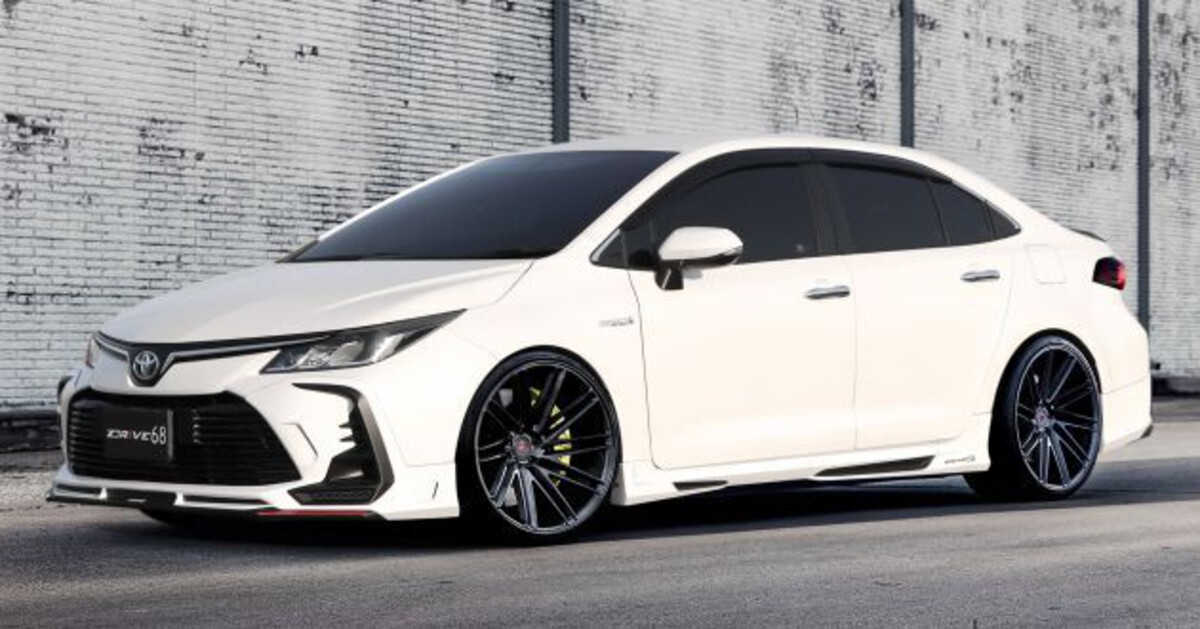
1. Toyota Corolla
The Toyota Corolla has long been considered one of the most practical choices in the compact sedan market. Its cost per mile is among the lowest in the industry, and that’s not by accident.
With over 50 years of continuous production, the Corolla has been refined into a machine that prioritizes reliability, simplicity, and cost-efficiency above all else. From its engine design to its interior electronics, everything is built with durability in mind. It’s no surprise that many Corolla owners routinely see 200,000 to 300,000 miles with minimal issues.
A huge reason for the Corolla’s affordability over time is its straightforward maintenance requirements. There’s nothing particularly exotic under the hood. Basic oil changes, spark plugs, brake pads, and belts are all easy to service.
The timing chain eliminates the need for a timing belt replacement—a costly job in other vehicles. Because Corollas are so popular, almost every mechanic has experience working on them, which keeps labor costs low and ensures quick repairs.
Another hidden benefit of the Corolla is its global platform. Toyota has sold millions of these vehicles worldwide, so replacement parts are cheap and abundant.
From original manufacturer parts to aftermarket options, the availability keeps prices down and ensures repairs can be made quickly. Even in smaller towns where parts for European or luxury vehicles may need to be ordered in, you can usually find what you need for a Corolla on the shelf.
Insurance costs are also extremely favorable. With strong crash safety records and low theft rates, insurance companies view the Corolla as a low-risk vehicle. This is especially beneficial for younger drivers or families on a budget.
The Corolla’s reputation for safety and ease of handling also makes it a great choice for first-time drivers or older adults who need something reliable but simple.
Depreciation works in the Corolla’s favor when buying used. While new Corollas are affordable, older ones retain value unusually well, which reflects how much trust the market has in the vehicle. When you resell it after a few years of ownership, you’re likely to recover a significant portion of what you paid, further reducing your effective cost per mile.
Perhaps the greatest endorsement for the Corolla comes from fleet operators—rental companies, delivery services, and driving schools all use Corollas because they know they’ll get their money’s worth. These businesses operate on razor-thin margins and wouldn’t tolerate vehicles that require constant repairs or expensive upkeep. Their adoption of the Corolla says more than any marketing campaign ever could.
In short, the Toyota Corolla doesn’t try to impress with flair or flash. Instead, it delivers unmatched long-term value, low fuel and maintenance costs, and bulletproof reliability that makes it one of the best used cars you can buy if you’re watching your wallet.

2. Honda Civic
The Honda Civic shares many of the Toyota Corolla’s strengths but adds a dose of sportiness and versatility that broadens its appeal. For decades, the Civic has built a loyal following thanks to its legendary engines, thoughtful engineering, and lower-than-average ownership costs. Whether you’re choosing a standard sedan, a coupe, or a hatchback variant, the Civic delivers cost savings at every turn.
What sets the Civic apart is Honda’s attention to efficient engine design. The brand is known for its naturally aspirated four-cylinder engines that run clean and last for hundreds of thousands of miles with proper maintenance.
Oil changes are straightforward, and high-mileage synthetic oils can often push intervals to 7,000–10,000 miles. Timing chains are standard in most modern Civics, reducing the need for major engine work around the 100,000-mile mark.
Because the Civic is so popular in both the consumer and enthusiast markets, parts are readily available and cheap. Whether it’s a radiator, alternator, or even body panels, you’ll find parts in abundance—often for less than half the cost of components on less common models. Many repair guides and tutorials exist online, empowering DIY owners to save even more money on upkeep.
Fuel economy is another high point. Most Civic models achieve well over 35 mpg on the highway, and the hybrid variants push close to 50 mpg. This makes the Civic an excellent option for high-mileage drivers like commuters, Uber or Lyft drivers, and students. Combined with a relatively low curb weight, the efficient engines allow for long stretches between fuel stops without sacrificing drivability.
From a resale standpoint, the Civic holds value better than most non-luxury compact cars. There’s always a demand for clean Civics with service records. This is due to their desirability among new drivers, daily commuters, and tuners alike. A well-maintained Civic can still fetch a healthy price years down the road, and its reputation for reliability only strengthens its resale appeal.
Civics also offer a more enjoyable driving experience than some of their competitors. The steering is responsive, the suspension is tuned for just enough road feedback, and the overall ride quality is composed and pleasant. All this adds to a sense of satisfaction that makes people hang onto their Civics longer—another factor that helps keep costs down.
Lastly, many Civics come with a wide range of trim options that let buyers strike a good balance between cost and features. Even base trims often include power windows, Bluetooth, and decent audio systems. It’s rare to find a car that’s so inexpensive to own yet still enjoyable to drive, but the Civic continues to hit that sweet spot with ease.
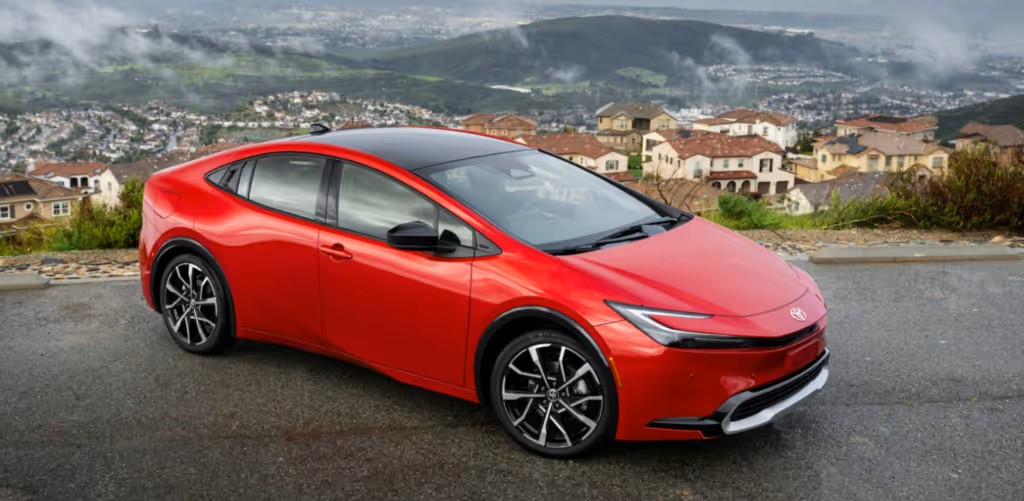
3. Toyota Prius
The Toyota Prius is in a category of its own when it comes to fuel economy, but what’s less understood is just how affordable it is overall.
Despite being a hybrid, which often brings fears of expensive repairs, the Prius is remarkably durable and offers some of the lowest cost-per-mile figures of any car in the last two decades. It’s not just for the environmentally conscious—it’s also for the financially savvy.
First, let’s talk about the Prius’s hallmark feature: its hybrid drivetrain. With real-world fuel economy consistently in the 45–55 mpg range, it dramatically reduces your fuel expenses, particularly if you drive often or have long commutes.
Over the life of the vehicle, these savings add up to thousands of dollars—enough to make up for any additional cost at purchase. And unlike early hybrids that suffered from limited parts and experimental tech, the Prius has matured into a proven workhorse.
A common concern with hybrids is battery replacement, but this issue is largely overblown when it comes to the Prius. Toyota engineered its battery packs with conservative margins and advanced cooling systems.
As a result, many Prius batteries last over 200,000 miles. Even when replacements are needed, refurbished units or third-party options have driven down the cost significantly, often under $1,500 installed.
The regenerative braking system in the Prius reduces wear on traditional brake components, meaning you won’t be changing pads and rotors nearly as often.
ikewise, the electronic drive system simplifies or replaces several traditional mechanical components like alternators and starters, which are prone to failure in regular gasoline cars. This streamlining reduces the number of potential problem points and minimizes repair frequency.
Because the Prius shares many parts with Toyota’s broader lineup, you’re not stuck with specialized components. The suspension, HVAC system, and many interior features are similar to what you’d find in a Corolla or Camry.
This keeps repair and maintenance costs within the same affordable range, and Toyota’s massive dealer network ensures you can get work done anywhere, affordably.
As a used purchase, the Prius also shines. Models from 2010 onward offer improved performance, quieter cabins, and better technology. Even older ones from the mid-2000s remain viable due to the vehicle’s reliability and generous lifespan. It’s a favorite among rideshare drivers for a reason—they know they’ll spend less on fuel and repairs and more time earning.
To top it off, the Prius has a solid safety record and tends to be inexpensive to insure. For budget-minded drivers who are also eco-conscious—or simply want a smart long-term purchase—the Prius continues to prove that hybrids can be both green and green for your wallet.
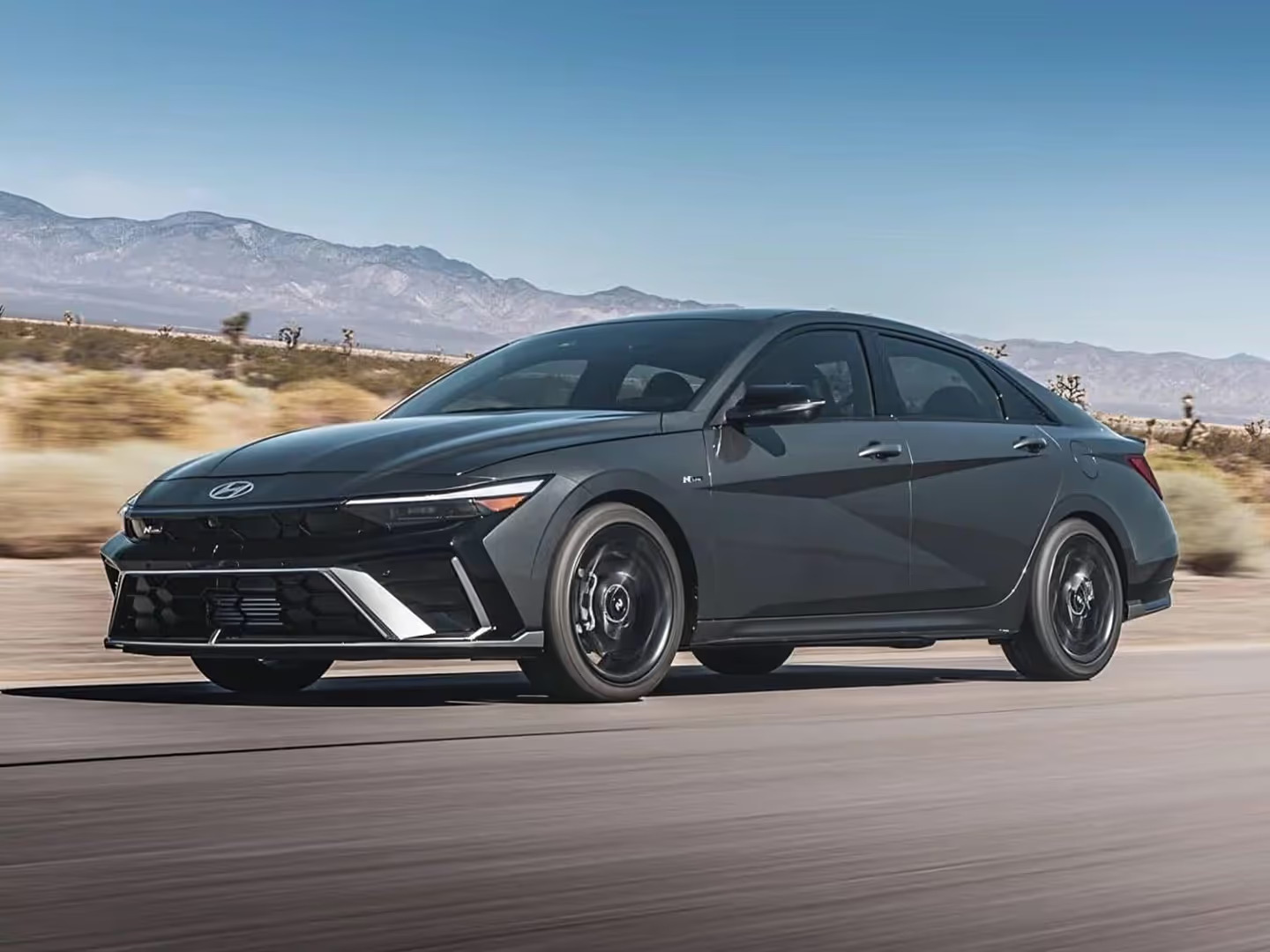
4. Hyundai Elantra
The Hyundai Elantra is an often-overlooked gem in the world of low-cost used cars, but it absolutely deserves a spot on this list. Hyundai has spent the last two decades transforming its brand image from a low-budget option to a manufacturer of quality, value-driven vehicles.
The Elantra, in particular, offers excellent cost-per-mile returns, thanks to its combination of fuel efficiency, dependability, and surprising longevity when properly maintained.
One of the Elantra’s biggest selling points is its long warranty, which is among the best in the industry. Many used Elantras still fall within the original 10-year/100,000-mile powertrain warranty, depending on age and mileage.
This can save thousands in potential repair costs. Even after the warranty expires, the cost of maintaining an Elantra is significantly lower than average, thanks to simple engineering and easy-to-source components.
Fuel economy is consistently strong across Elantra model years. Newer models from 2017 onward can get close to 40 mpg on the highway. Combined with relatively low curb weight and efficient transmissions, you’re looking at fewer fill-ups and lower emissions without sacrificing usability. For commuters and city drivers alike, the Elantra stands as a highly economical option that goes easy on the wallet.
Maintenance and repairs on the Elantra are typically straightforward and affordable. Whether it’s a battery, brake system, air filter, or timing components, parts are readily available and inexpensive.
Hyundai uses many shared components across its vehicle lineup, meaning parts can often be used interchangeably or found easily at junkyards or parts stores. Labor costs remain low due to a design that doesn’t complicate basic service procedures.
Another cost advantage is the Elantra’s lower-than-average insurance premiums. Because of its strong safety record and modest engine output, insurers classify it as a relatively low-risk vehicle. This makes it particularly appealing to younger drivers, students, and families seeking budget-conscious transportation without sacrificing safety.
Resale value has improved significantly for the Elantra, especially for models released after Hyundai’s reputation began to shift around 2011.
While earlier models suffered from steep depreciation, that works in your favor as a used car buyer. You can get a newer, well-equipped Elantra for a fraction of what it originally cost, and if maintained well, it can last just as long as more expensive competitors.
Additionally, the Elantra offers a comfortable and feature-rich driving experience. Even base trims tend to include power accessories, air conditioning, and USB/Bluetooth capabilities.
Higher trims add leather seats, sunroofs, and touchscreen infotainment—all without significantly raising maintenance complexity or operating costs. In many ways, the Elantra delivers near-luxury convenience at a fraction of the long-term expense.
In summary, the Hyundai Elantra offers exceptional value as a used vehicle with a low cost per mile. It may not have the name-brand prestige of Toyota or Honda, but when judged purely on economics, it holds its own—and then some.
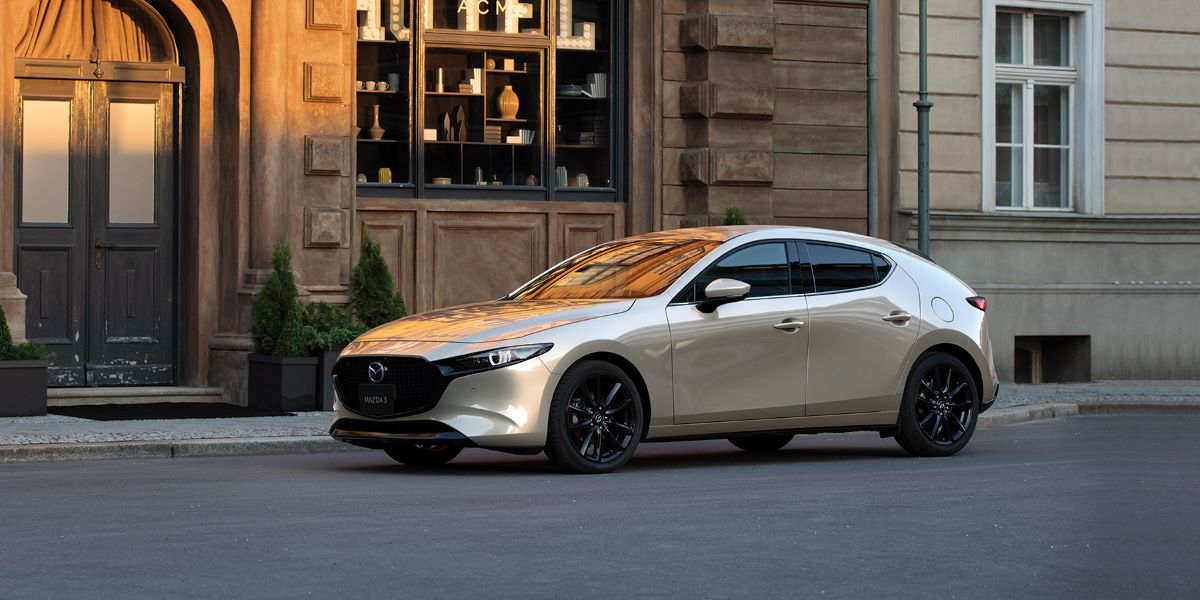
5. Mazda3
Among compact cars, the Mazda3 is a standout for drivers who want a mix of affordability and driving enjoyment. While other cars in this segment often focus solely on economy, the Mazda3 blends cost-effectiveness with sharp handling, upscale design, and surprising durability. It’s a car that’s cheap to run but doesn’t feel cheap to drive, which is a rare combination in the used car market.
Mazda3s are known for their efficient and reliable SKYACTIV engines, which avoid the complexity of turbochargers while still delivering impressive fuel economy.
Highway mileage often hits 35–40 mpg depending on the year and trim. The engines are built to be durable, and with regular oil changes and basic upkeep, they can easily last well beyond 200,000 miles. Timing chains, rather than belts, further reduce long-term service costs.
Where the Mazda3 really excels is in build quality. The interior feels more premium than most other cars in its class, even in base trims. Controls are intuitive, materials are durable, and everything from the dashboard to the steering wheel is thoughtfully designed.
Despite these upscale touches, maintenance remains simple and inexpensive. Brake pads, suspension components, and filters are affordable and widely available. The Mazda3 has also proven to be mechanically straightforward, which benefits owners who prefer DIY maintenance or want to avoid dealership service prices.
Unlike turbocharged or hybrid systems that require specialized knowledge, the naturally aspirated engines and conventional drivetrain components are easy for any mechanic to work on. Labor hours are typically lower than average, which translates to major savings over time.
Insurance rates are reasonable for the Mazda3, particularly on the sedan versions. The hatchbacks and sportier trims may carry slightly higher premiums due to their sportier reputation, but they still fall well below the rates charged for European competitors. Depreciation is modest, especially for later models, and used Mazda3s tend to hold value better than many would expect for a non-luxury brand.
Another hidden financial benefit is the Mazda3’s resistance to rust and corrosion. Starting in the early 2010s, Mazda significantly improved its paint and underbody protection, helping these cars last longer in snowy or coastal environments. That adds years of usability and keeps resale values stronger, particularly in regions where rust is a common problem.
Most importantly, the Mazda3 offers something many budget cars lack: personality. It’s fun to drive, agile in corners, and responsive on the highway—all while being inexpensive to own and maintain. For those who want more than just transportation but still need to stick to a budget, the Mazda3 delivers on every front.
5 Used Cars With High Repair Costs
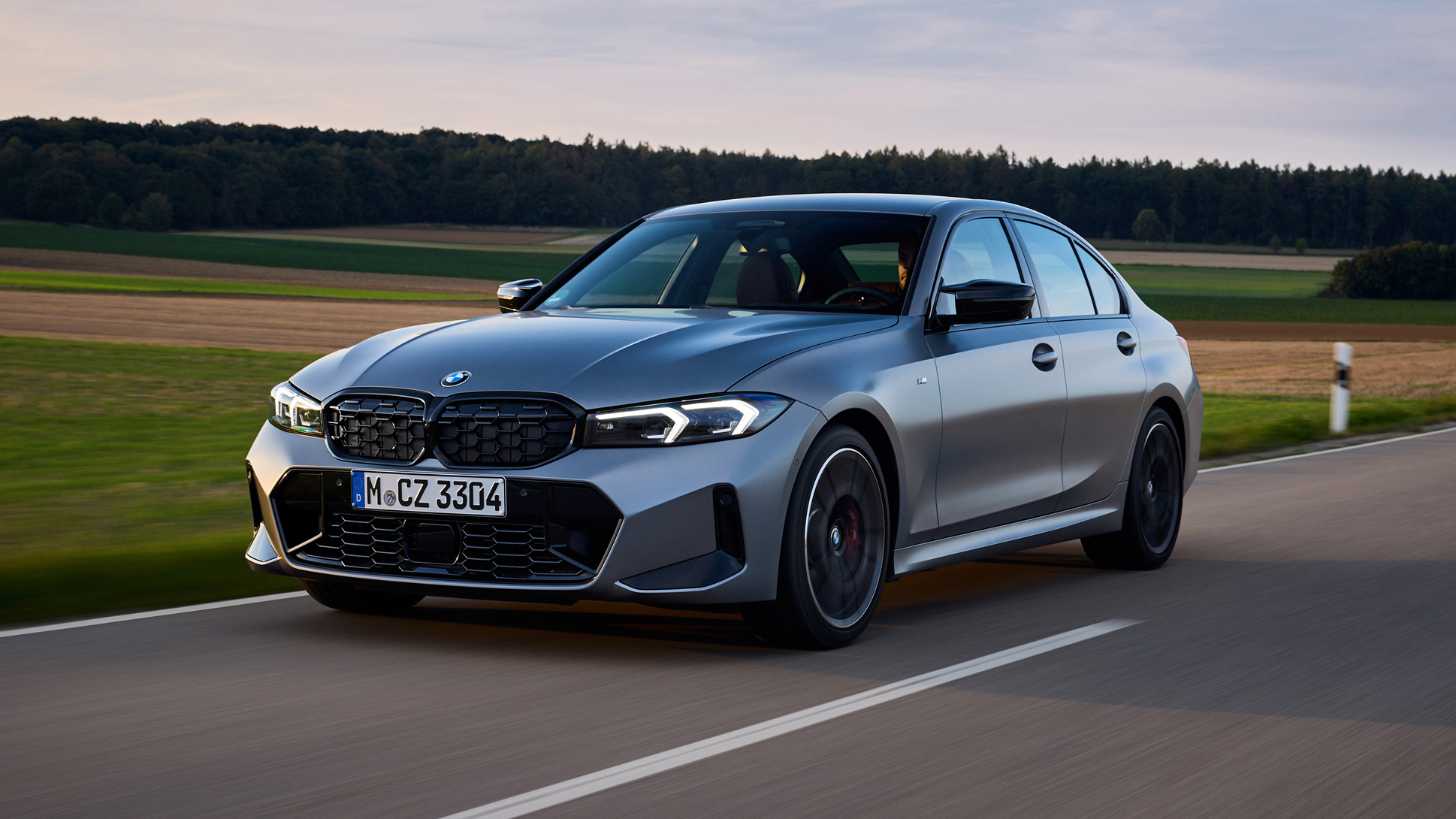
1. BMW 5 Series
The BMW 5 Series is a masterclass in luxury, performance, and engineering sophistication—but all of those attributes come at a steep cost, especially once these vehicles hit the used market.
While the initial purchase price of a 5–7-year-old 5 Series might seem like a steal, the long-term costs can quickly overshadow any savings. This model is notorious for high repair bills, ongoing maintenance requirements, and parts that often cost two to three times more than non-luxury alternatives.
One of the biggest issues lies in the engine and drivetrain complexity. Many 5 Series models come equipped with turbocharged engines that offer exhilarating performance but introduce a host of potential issues.
High oil consumption, timing chain wear, and turbocharger failures are just a few common headaches. Each of these problems can lead to repairs costing anywhere from $2,000 to $6,000. Even something as simple as an oil leak can spiral into a multi-thousand-dollar repair job due to tight engine packaging and high labor rates.
Electronics are another major pain point. The 5 Series is loaded with sensors, modules, and computerized systems—from dynamic stability control to adaptive headlights and gesture control interfaces.
As these cars age, electrical gremlins emerge, and diagnosing the root cause can take hours of skilled labor. Worse still, many problems require dealership-grade equipment to fix, locking owners into high repair shop rates with limited options for independent service.
The suspension system, especially in higher trims with adaptive dampers or air suspension, adds another layer of cost. Shock absorber replacements are not only expensive ($1,500+ per corner in some cases) but may need to be done in pairs.
Additionally, front control arms, bushings, and ball joints wear faster due to the vehicle’s weight and performance-oriented tuning, meaning you’ll be paying for suspension work sooner and more frequently.
Fuel costs are another hidden factor. The 5 Series typically requires premium gasoline and returns only moderate mileage. Combined with frequent tire replacements, more expensive fluids, and higher insurance premiums, the car is expensive to operate even in its best condition. If maintenance has been deferred by previous owners, expect those costs to compound very quickly.
Depreciation also plays a strange role here. While rapid depreciation helps bring the initial purchase price down, it also means you may be spending more in repairs than the car is worth within a few years.
Many owners find themselves in the awkward position of deciding whether to dump $5,000 into a car now worth $8,000—or sell it at a loss and walk away. For this reason, the 5 Series is often a trap for unsuspecting buyers lured in by its initial luxury charm.
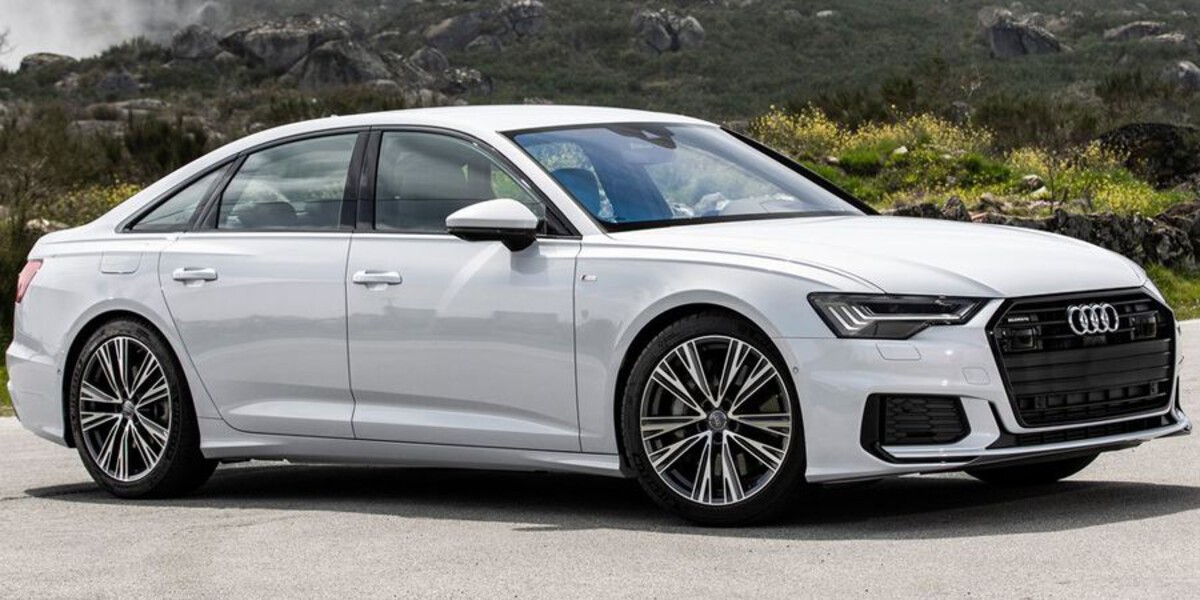
2. Audi A6
The Audi A6 is sleek, refined, and packed with cutting-edge technology—but these very qualities are what make it so expensive to own in the long run.
Used A6s, particularly those that have crossed the 60,000-mile threshold, start to reveal their true cost of ownership in the form of failing sensors, engine problems, and complex repair procedures. It’s a car that requires constant attention, and every repair seems to carry a premium.
The hallmark of Audi’s appeal—its Quattro all-wheel-drive system—adds stability and driving confidence but also increases complexity.
When components like the center differential or driveshafts begin to wear, replacements can easily run $2,000 to $3,000. Even regular maintenance like CV joint replacements or transmission fluid changes cost more due to the specialized equipment and labor needed. In some cases, a simple fix like a leaking seal becomes a full-day job.
Audi engines, especially the 3.0L supercharged V6 and the 2.0L turbocharged four-cylinder, are prone to specific high-cost issues. The 2.0T engine often suffers from oil consumption problems, failed PCV valves, and timing chain tensioner issues—all of which can require engine-out service if left too long. The V6, while more powerful, has known issues with the timing chain located at the back of the engine, making even routine service a labor-intensive affair.
Then there’s the issue of the electronic systems. Audi’s MMI (Multi Media Interface) is highly sophisticated, offering navigation, smartphone integration, and vehicle diagnostics.
However, when something fails—be it the screen, the control knob, or a faulty module—the fix can cost hundreds or even thousands. Add to this the potential for problems with the climate control system, parking sensors, adaptive cruise control, and lane departure systems, and you’re looking at a repair bill every few months.
Interior components, too, don’t age as gracefully as you’d expect. Peeling buttons, sunroof drain clogs, and malfunctioning window regulators are commonly reported and not cheap to fix.
Small things add up—especially when each visit to the shop involves premium parts pricing and hours of labor. Owners often report $1,500–$3,000 in yearly maintenance, even with preventive care.
Despite the luxury and performance the A6 offers, the total cost per mile over several years of ownership rivals that of far more exotic vehicles.
Many A6 owners fall into the trap of believing German engineering means indestructibility—only to realize too late that it actually means they need an engineering degree just to understand the repairs. Unless you have deep pockets or an Audi-specialized mechanic on speed dial, the A6 can quickly become an expensive liability.
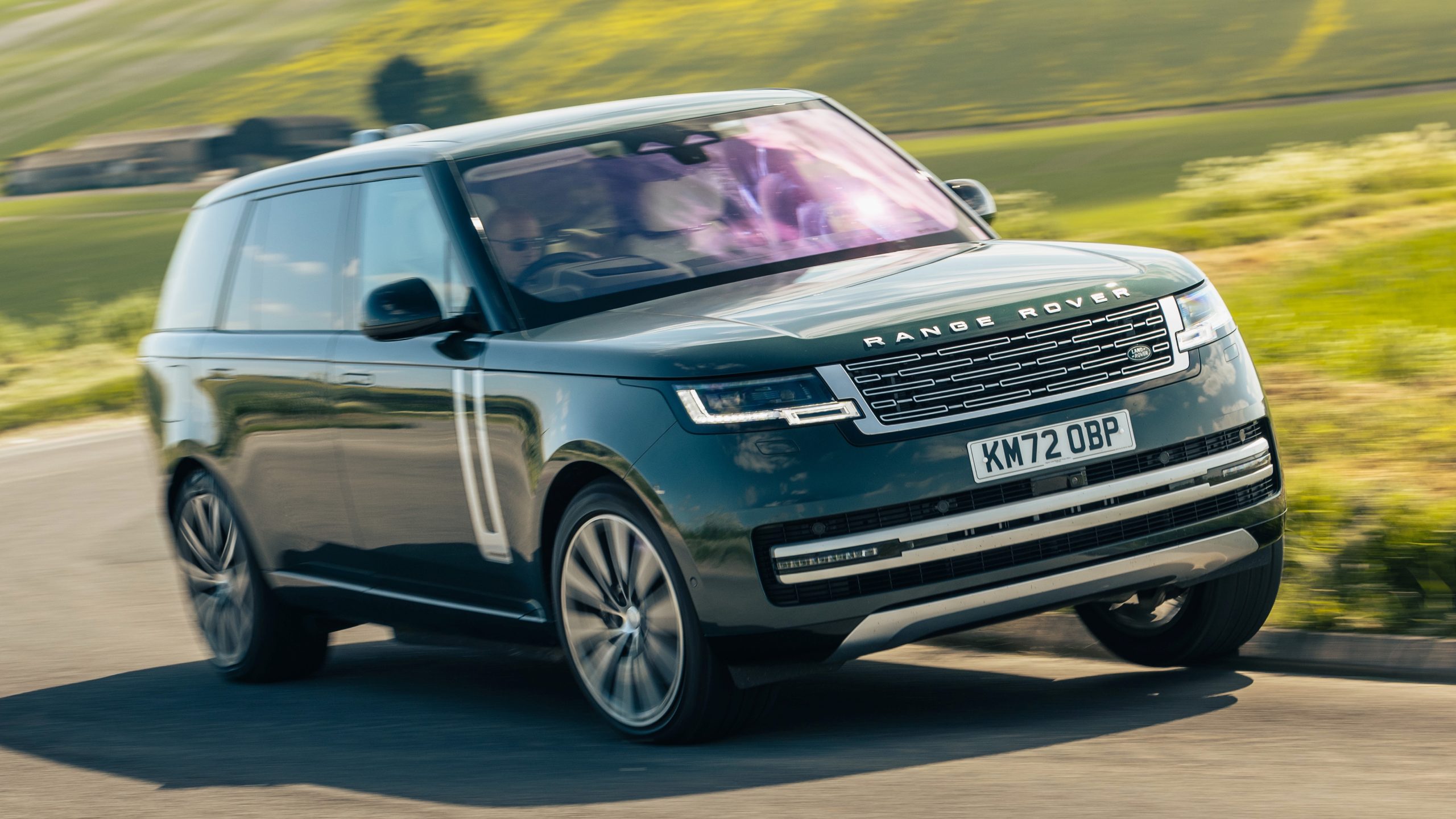
3. Land Rover Range Rover
Few vehicles scream status quite like the Range Rover, but behind its prestigious image lies a long-standing reputation for unreliability and astronomical maintenance costs.
Range Rovers are infamous in automotive circles for their breakdown frequency and the financial punishment that follows. Buying a used one—especially with over 60,000 miles—often feels like signing up for a luxury subscription… with no end in sight.
One of the most problematic systems is the air suspension. While it gives the Range Rover its signature smooth ride and off-road flexibility, it’s also one of the most failure-prone components.
When an air strut fails (and it will), replacement costs can range from $1,500 to $2,500 per corner. The compressor, air lines, and ride height sensors can also fail independently, adding more to the repair tally. Some owners eventually opt to convert to coil springs just to avoid ongoing problems, but that sacrifices ride quality.
Electronics are another nightmare. The infotainment system is sluggish and prone to bugs, navigation systems crash, backup cameras stop working, and random warning lights appear for no clear reason.
Diagnosing these issues often requires dealership tools and software updates that cost hundreds of dollars just for a scan—before any parts are replaced. Touchscreen replacements alone can cost upwards of $1,200.
Engines and transmissions also raise major red flags. Older V8s have timing chain and cooling system issues. Turbochargers on newer models can fail prematurely, leading to repairs that easily exceed $4,000.
The supercharged versions are particularly costly to maintain due to heat management issues and tight under-hood packaging. If the engine fails, a replacement can be $10,000 or more—often more than the car is worth.
Fuel economy is abysmal across the Range Rover lineup. With average mileage in the 13–17 mpg range, you’ll be spending a small fortune on fuel—especially since the vehicle requires premium-grade gasoline. Tire wear is also accelerated due to the vehicle’s weight and performance tires, and replacement costs can run $1,000+ for a full set.
Add to this steep insurance costs (thanks to high repair prices and theft risk), high depreciation, and the limited number of independent mechanics who are willing to touch these vehicles, and you’re looking at one of the most expensive ownership experiences on the market. While Range Rovers offer luxury, capability, and prestige, the cost of keeping one on the road often rivals that of high-end sports cars.
Unless you absolutely need its off-road prowess—or you have a dedicated repair fund set aside—the Range Rover is a high-risk used car purchase that can quickly turn into a financial black hole.
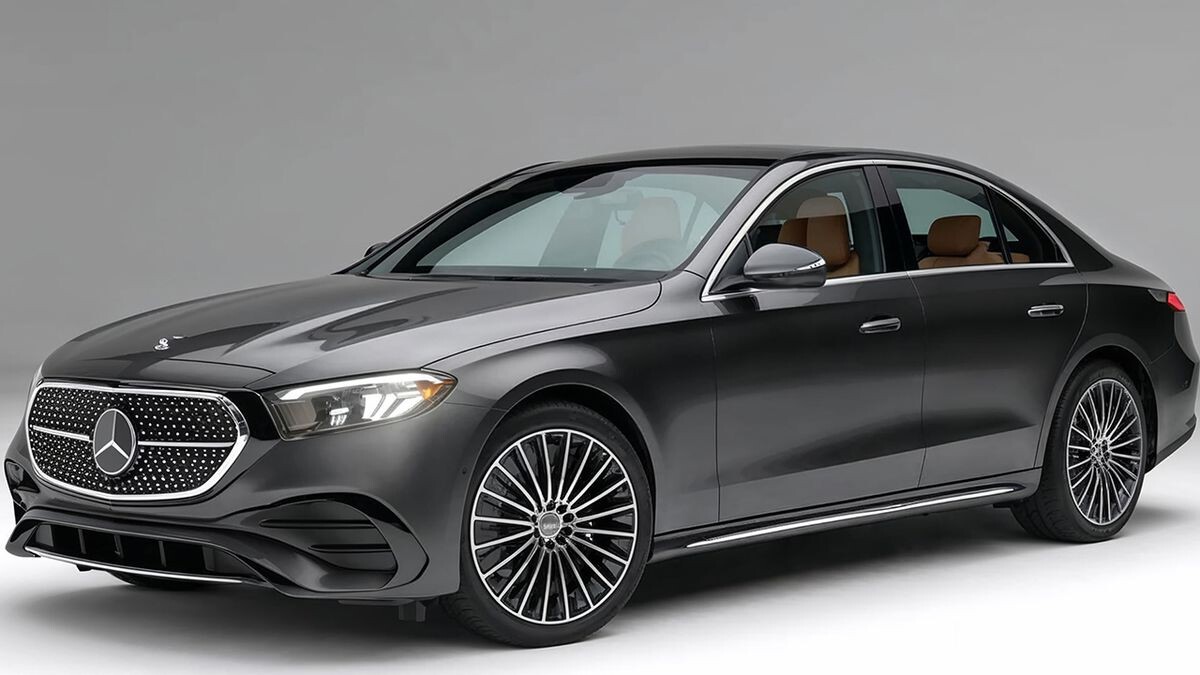
4. Mercedes-Benz E-Class
The Mercedes-Benz E-Class is one of the most iconic luxury sedans in automotive history, known for blending comfort, engineering, and performance in a refined package. However, once the factory warranty expires, the E-Class becomes one of the most expensive used vehicles to maintain. Elegant though it may be, this car demands a high level of care—and your wallet may struggle to keep up.
At the core of the problem is Mercedes’ engineering philosophy: precision and complexity. While this makes for an exceptional new car experience, it significantly raises repair costs down the road.
Common mechanical issues include air suspension failures (especially in models with AIRMATIC), oil leaks from valve cover gaskets or timing chain covers, and electronic throttle body failures. Each of these issues can easily exceed $1,000 in repair costs, and many involve complex diagnostic work just to identify.
One notorious issue with older E-Class models (especially W211 and early W212 platforms) is the Sensotronic Brake Control (SBC) system. This “brake-by-wire” technology was advanced for its time but has proven to be costly and unreliable.
When it fails—as it often does after 70,000 miles—the replacement can cost upwards of $2,500. Combine that with worn-out suspension components, deteriorating motor mounts, and complex electrical systems, and you’re looking at a never-ending to-do list for the service shop.
Electronics are especially prone to failure in used E-Class models. The COMAND infotainment system can freeze or go black, requiring expensive replacement screens or control modules.
Window regulators fail regularly, and keyless entry systems (Keyless-Go) are known to become glitchy or non-functional. Diagnosing electrical faults often requires dealership-level tools, and labor costs at Mercedes-certified shops tend to be on the high side.
Many E-Class models use turbocharged or supercharged engines, which can be temperamental as they age. Coolant leaks, failed intercoolers, and high oil consumption are not uncommon.
In some models, oil cooler seals or timing chain guides become a major issue after 100,000 miles, requiring engine teardown-level service. These kinds of jobs often exceed $3,000–$5,000 and are not easy for independent mechanics to handle.
Tires, brakes, and fluids are all “premium spec,” meaning you’ll be paying more even for basic maintenance. The E-Class also tends to consume expensive synthetic oil, specific transmission fluid, and OEM-only filters. DIY maintenance is possible for mechanically inclined owners, but parts alone can be 2–3x more expensive than for a comparable Japanese or Korean vehicle.
While the E-Class offers a beautiful driving experience, superb interiors, and prestige, the long-term ownership cost can be staggering. As a used vehicle, it’s a classic example of “you get what you pay for”—and sometimes more than you bargained for. Unless you’re ready to treat this vehicle like a high-end investment, it might be wiser to admire it from a distance.
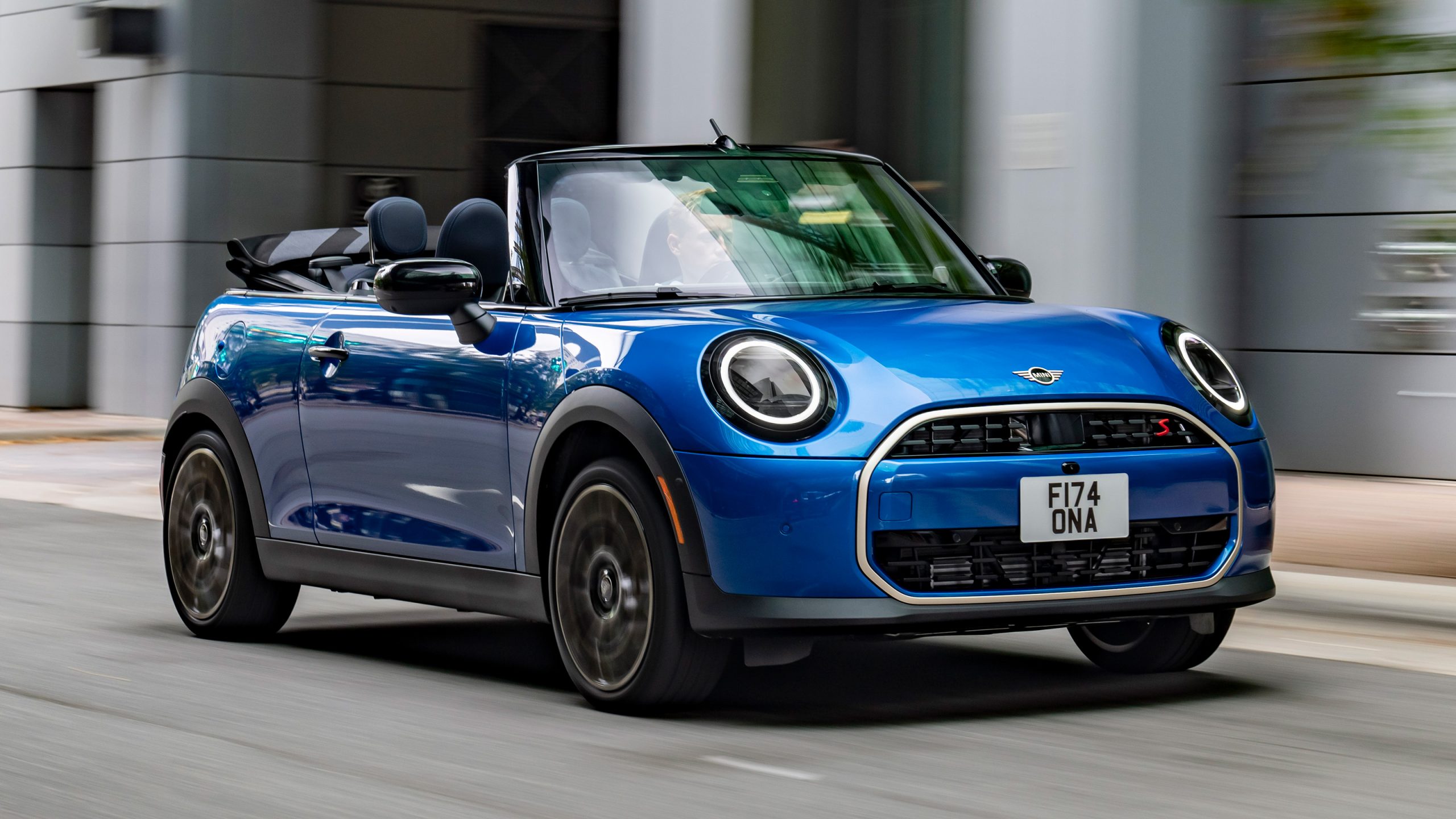
5. Mini Cooper
The Mini Cooper is quirky, stylish, and incredibly fun to drive—but it’s also one of the most deceptively expensive used cars to maintain. While its small size and relatively low purchase price make it look like a budget-friendly option, real-world ownership often tells a different story. From engine issues to electrical gremlins and transmission failures, the Mini’s charm can wear off quickly once the repair bills start to pile up.
The most common issue with Mini Coopers—especially those built between 2007 and 2013—is related to the timing chain tensioner. This component often fails prematurely, leading to a loud rattling noise from the engine and, in worst cases, catastrophic engine damage if ignored.
Replacing the timing chain on a Mini isn’t a simple or cheap job; it typically runs between $1,200 and $2,000 due to labor-intensive work in a tightly packed engine bay.
Another frequent problem lies in the cooling system. Mini Coopers are known for water pump failures, thermostat housing cracks, and coolant leaks that can lead to overheating.
Each of these issues might not be severe on their own, but when combined—as they often are—they result in repeated trips to the mechanic. Replacing the water pump alone can cost $700–$1,000, and thermostat housings are labor-intensive due to their location.
Transmission woes are also common, especially with the Continuously Variable Transmission (CVT) found in early automatic Mini Coopers. These units are notorious for failing around 80,000–100,000 miles and are often not serviceable, meaning full replacement is required, at a cost of $4,000 or more. Manual transmission models fare slightly better, but clutch and flywheel replacements are still expensive due to the car’s tight packaging.
Electronics in the Mini are another source of frustration. Random dashboard lights, window motor failures, and dead sensors frequently crop up, and diagnosing these issues is rarely straightforward.
Because BMW owns Mini, parts often carry BMW-level pricing, and many repairs require dealership-grade diagnostic equipment. Even changing a battery often requires reprogramming to prevent voltage-related faults.
Suspension wear is another consistent problem, especially in models driven hard. Control arm bushings, sway bar links, and struts wear out prematurely and lead to clunky, unstable handling. These aren’t luxury car parts, but replacement costs are still high due to limited access in the wheel wells and the necessity for specialty tools in some cases.
The Mini Cooper has undeniable appeal: it’s iconic, zippy, and stands out in a sea of bland compacts. But that charm comes with an ongoing financial commitment.
Between frequent breakdowns, costly repairs, and a surprising lack of reliability, the Mini is a classic case of style over substance, at least when it comes to long-term affordability. For many owners, what starts as a love affair with a fun little car becomes a stressful, costly relationship that’s difficult to end.
ALSO READ: 5 SUVs With the Most Headroom and 5 With Tight Ceilings
Navigating the used car market can feel like walking a tightrope between value and risk. As this article has shown, the real cost of owning a vehicle extends far beyond the purchase price. A low sticker price can be misleading if the car demands frequent, costly repairs or guzzles fuel.
Conversely, paying a bit more upfront for a car known for reliability and efficiency can yield significant savings in the long run. Understanding the concept of cost per mile—which aggregates all expenses from fuel to repairs, insurance, and depreciation—is essential to making a sound investment.
The five used cars highlighted with low cost per mile illustrate that affordable ownership is achievable without sacrificing quality or enjoyment.
Models like the Toyota Corolla and Honda Civic have earned their stellar reputations by combining reliable engineering with excellent fuel economy and low maintenance costs. Cars such as the Hyundai Elantra and Mazda3 show that newer brands and models can offer tremendous value and refined driving experiences while keeping expenses manageable.
These vehicles typically feature simple, proven mechanical designs, widely available parts, and large owner communities that help drive down repair costs. Choosing one of these cars often translates into fewer unexpected breakdowns and a smoother ownership journey.
On the other hand, the luxury and performance vehicles featured—BMW 5 Series, Audi A6, Range Rover, Mercedes-Benz E-Class, and Mini Cooper—paint a cautionary tale. Their advanced technologies, intricate electronics, and performance-tuned components come at a cost.
Parts can be exorbitantly priced, labor-intensive repairs are common, and many systems require specialized tools or knowledge. While these cars deliver impressive driving dynamics and comfort, they can rapidly drain your wallet if you’re not prepared for the upkeep.
The very features that make these vehicles desirable also make them expensive to maintain as they age. Without a rigorous maintenance history or access to a trusted specialist mechanic, these cars may become financial liabilities.
For prospective used car buyers, the takeaway is clear: it’s critical to look beyond the price tag. Evaluate a car’s reliability record, common repair issues, fuel efficiency, and typical maintenance costs. Consider insurance premiums, parts availability, and whether specialized repairs will be necessary. Reliable ownership demands thoughtful research and sometimes a willingness to pay slightly more for peace of mind.
By combining knowledge of the vehicles’ reputations with an understanding of cost per mile, buyers can avoid costly surprises and find a car that balances performance, style, and financial sense. Low-cost-per-mile vehicles often serve as dependable workhorses, while high-maintenance luxury cars might be best suited for those with ample budgets and mechanical expertise.
Ultimately, your choice of a used car should align with your priorities—whether that’s saving money over time, enjoying a spirited drive, or riding in luxury. This guide empowers you to make an informed decision that respects your budget and lifestyle. With the right car, you can enjoy reliable transportation without the stress of runaway repair bills, making your used car ownership experience both enjoyable and economically sensible.
